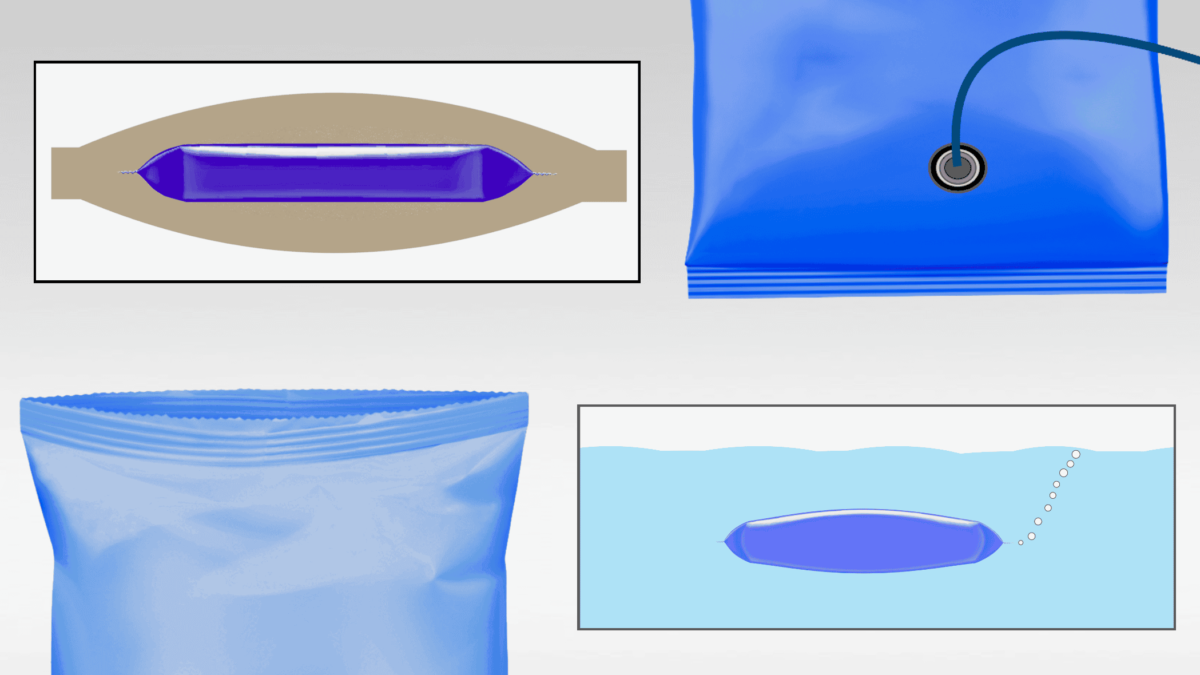What’s the ultimate combination of heat, dwell time, and pressure for producing quality seals on vertical baggers? The answer varies, depending on your machinery, packaging materials, and conditions. But in all cases Hot Tack is an important, but often overlooked, consideration.
This Greener Corporation Tech Bite explains Hot Tack and its role in the heat + time + pressure sealing equation for packaging machines with reciprocating, non-rotary sealing jaws.
Hot Tack
Hot Tack refers to the strength of a seal while it’s still warm.

All packaging materials have an Effective Sealing Temperature Range between the Melt Point, or Seal Initiation Temperature (SIT) of the sealant layer, and the Distortion Point, where package appearance and seal quality deteriorate.

Modern sealants have been engineered to provide excellent seal strength. But packages have little or no strength until seals have cooled below the melting point of the sealant layer.

Hot Tack Problems
During the bag making or case packing process, poor hot tack presents as mooning or complete failure of a seal that has been stressed while it’s still too warm.

Hot Tack problems are often caused by sealing temperatures that are set too high. These issues are especially prevalent with thicker, stiffer packaging materials, which can be more difficult to transfer heat through and often prompt a temperature increase.
Improving Hot Tack
Reduce Temperature
The best method for improving Hot Tack is to reduce temperature settings, so that the sealant layer cools below its melt point more quickly. Left as an isolated adjustment, however, reduced heat could cause poor seal integrity on the initial package seals.

Increase Time + Pressure
But since heat, time, and pressure are closely linked and can be interdependent, a compensating increase in dwell time, pressure, or both can maintain seal quality.

Longer dwell times are often not feasible, since they slow down production and reduce output.
But machine adjustments and customized sealing jaw designs can provide greater pressure and better surface contact between the packaging material and the sealing jaw serrations. More heat is driven through to the sealant layer within a given time period, and temperatures can be reduced.


Package Width & Seal Width
It’s important to recognize that package dimensions affect sealing pressure levels.
As a package becomes wider, seal jaw force is diluted over a greater area, and the effective pressure transferred to the seal at any given point is reduced. Wider packages generally require longer dwell times than smaller packages.

Narrower seal widths also supply greater pressure at any given point by concentrating it into a smaller area.
Reducing seal width may require a corresponding decrease in sealing temperature that improves Hot Tack and can reduce per-package film costs.

Refining your machine adjustments and sealing jaw designs will help you provide the extra pressure needed to optimize Hot Tack, and at the same time improve seal quality and productivity.
To receive recommendations for optimizing Hot Tack on your packaging application, contact Greener Corporation. We provide Integrated Parts and Technical Services worldwide.


